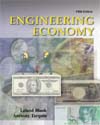When a study period is specified for the replacement study, it is vital that market value and cost estimates for the defender be as accurate as possible. When the defender’s remaining life is shorter than the study period, it is critical that the cost for continuing service be estimated carefully. All the viable options for using the defender and challenger are enumerated, and their AW equivalent cash flows are determined. For each option, the PW or AW value is used to select the best option. This option determines how long the defender is retained before replacement. - Selection is made from among independent projects.
- Each project must be accepted or rejected as a whole.
- Maximizing the present worth of the net cash flows is the objective.
- The total initial investment is limited to a specified maximum.
The present worth method is used for evaluation. To start the procedure, for-mulate all mutually exclusive bundles that do not exceed the investment limit, including the do-nothing bundle. There are a maximum of 2m bundles for m projects. Calculate the PW at MARR for each bundle, and select the one bundle with the largest PW value. Reinvestment of net positive cash flows at the MARR is assumed for all projects with lives shorter than the longest-lived project. The capital budgeting problem may be formulated as a linear programming problem to select projects directly in order to maximize the total PW. Mutually exclusive bundles are not developed using this solution approach. Excel® and SOLVER® can be used to solve this problem by computer. | 


 2002 McGraw-Hill Higher Education
2002 McGraw-Hill Higher Education